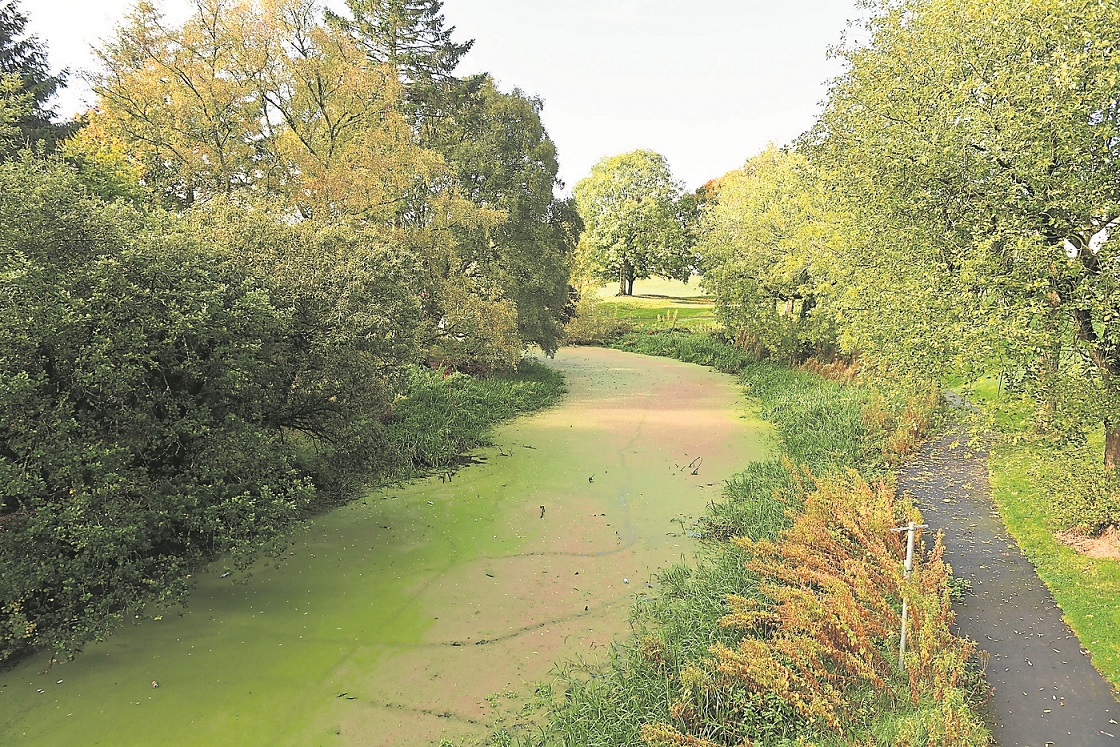THE FERMANAGH public has been urged to report any cases of blue-green algae they encounter around the county’s waterways, with the problem seemingly much worse than official figures suggest.
Residents in Enniskillen have noticed a serious build-up of algae on the River Erne in recent weeks, particularly in the Riverside area, as can be seen from our photographs.
However, while there are currently 21 officially recorded incidents of algae around Fermanagh – from Kesh right down to the border with Cavan – the current Enniskillen bloom isn’t one of them.
This raises the obvious question – how many other serious algae incidents are going unrecorded around the county?
While there are a number of factors that can lead to an algae bloom, such as agricultural runoff and the presence of invasive species such as zebra mussels, one of the major causes is overflow from waster water systems. This would appear to be the cause of the Enniskillen algae, with a sewage overflow pipe located nearby the current bloom.
While local council authorities and the water service are responsible for managing and assessing the risks associated with blue-green algae, the Department of Agriculture, Environment and Rural Affairs (DAERA) has been monitoring the situation.
“DAERA continues to respond to reports of blue-green algae within Northern Ireland waters and has put in place some emergency planning measures to deal with the situation,” said a Department spokesman.
“Impacts have primarily been seen in Lough Neagh and the Lower Bann but other sites have also been impacted including north coast bathing waters and the Fermanagh lakes.”
Noting an urgent review of existing algae policies had been commissioned, DAERA said, “The public are reminded that blue-green algae can be harmful to humans and is highly toxic to animals. The public should therefore follow signage erected by local authorities.”
DAERA also urged the public to familiarise themselves with the signs of algae bloom, and to report it to the Department via the ‘Bloomin Algae App’. If you do not have the app you can also report a bloom directly to NIEA.
It is through reports from the public that the Department can determine how prevalent the problem is.
To download the app visit https://www.ceh.ac.uk/our-science/projects/bloomin-algae.
Alternatively, you can email emergency-pollution@daera-ni.gov.uk or phone 0800 80 70 60.
To read more.. Subscribe to current edition
Receive quality journalism wherever you are, on any device. Keep up to date from the comfort of your own home with a digital subscription.
Any time | Any place | Anywhere









